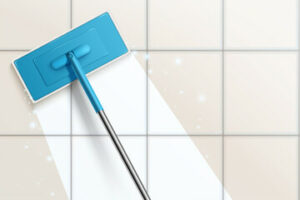Carpets can get wet from accidental spills or water leaks on the property. When it does, it can be a big problem. Water can easily seep through the carpet, and the moisture can be a magnet for moulds.
You need to remove the excess moisture to prevent this from happening. Removing the water from the carpet will help arrest further damage.
As the first step in your carpet cleaning after the mishap, here are some fail-proof carpet cleaning solutions that could help dry your carpet in no time.
How to Dry Your Carpet
Water can damage your carpet in many ways. First, the moisture can get trapped under the carpet even after the water is gone on the surface. If this goes unnoticed and the carpet is not dried properly, you’ll soon find moulds thriving in your carpet. It can damage the carpet and leave a musty smell.
You can flex some muscles and do some work. Ask for carpet cleaning services if the water damage is significant and can be too much to handle. This way, you don’t have to burden yourself with removing the water from your carpet.
For best results, we recommend drying the carpet within 24 hours of its exposure to water. Leaving it wet for too long, you have mould and mildew thriving rapidly.
Here are the steps to dry your carpet after a flood or water leak.
1. Absorb all the moisture from the carpet
One of the oldest carpet cleaning solutions known to many is placing towels on the wet area of the carpet. Walking over it will help absorb the wetness faster. However, you must leave the towels for 30 minutes and change them when they get soaked.
You can also use a wet vacuum. If you don’t have one, you can rent from cleaning companies.
2. Open the windows, and turn on the AC and fans.
It would help if you had proper air circulation while the towel is soaking up most water from your carpet. Turning on the AC and fans or opening the windows will help. In addition, it can help eliminate the musty smell that quickly develops from a wet carpet.
Alternatively, if you can put your carpet under the sun, try laying it in direct sunlight. This helps when the carpet is immensely saturated.
3. Use a Dehumidifier or radiant heating system.
Dehumidifiers are useful in rooms exposed to moisture and moulds. Properties prone to floods or water leaks should have one to pull the moisture and prevent the moulds.
If you have a radiant heating system, turn the temperature to the highest setting for speedy results. This will dehydrate the carpet and hasten the drying process.
You can combine the two to dry your wet carpet before moving on to other drying methods.
4. Use a wet-dry vacuum to remove the moisture.
A wet-dry vacuum cleaner removes water from the carpet better than a conventional household vacuum cleaner. When using the machine, empty the contents after every use. Do the same process around two to three times before the moulds and mildew set in.
5. Deep clean while drying the carpet.
Aside from getting rid of the water, you also need to clean the carpet before it completely dries or while it is still wet. This is the perfect opportunity to give it a thorough cleaning.
Use a carpet-specific cleaning solution to remove the tough stains and dirt. You’ll have a clean and fresh-smelling carpet once it’s dry.

6. Have the carpet steamed cleaned
Get professional steam carpet cleaning. This cleaning is done at a super high temperature that kills all the toxins harbouring in the carpet. Even if you clean the carpet, which is still wet, the germs and viruses are buried within its fibres. The steam can reach these nasty pathogens and remove the spores.
7. Baking Soda to remove moisture and stains
Use only a dry-cleaning product if you find nasty stains on your carpet. It is a type of cleaner that absorbs moisture quickly and is better than a wet carpet shampoo in this current circumstance.
Most carpet cleaning experts swear that it can prevent the appearance of watermarks once the carpet is fully dry,
Baking soda is good at absorbing small patches of moisture if you have no dry-cleaning solution. Sprinkle an ample amount over the wet area and let it sit overnight. Vacuum the carpet the following day to remove the powder.
8. Vacuum the carpet after its dry
While the steps mentioned above can help in drying the carpet, you need to ensure that there are no mould spores that have grown during the drying process.
Use a vacuum cleaner to pick them up. Baking soda can also help to prevent them from multiplying.
9. Key Takeaways
Drying a wet carpet within 24 hours of the incident is critical as mould growth can occur immediately. Wine, juice, and other liquids are more critical because they can be difficult to remove when they dry or leave a permanent stain on your floor.
By taking proactive measures, you are preventing moulds and mildew from damaging your carpet. Your quick action can prevent lasting damage,
If your carpet becomes wet from water leaks, flooding or spills, use the recommended methods to dry it. Better call for professional carpet cleaning services when you are not confident with your ability to save the carpet.
Effly offers wet carpet cleaning solutions. Call them now for details.

Julie is a passionate writer a mother of three kids and a dedicated cleaning enthusiast, eager to share valuable insights and practical tips on maintaining a clean and organized home. With a deep understanding of the challenges of maintaining a tidy living space, Julie has spent years honing its expertise in cleaning methods, organizing techniques, and sustainable practices.


